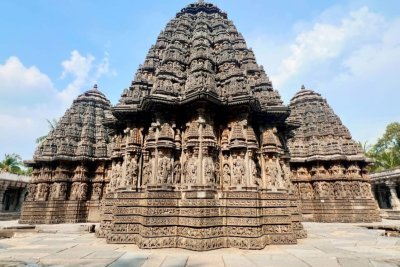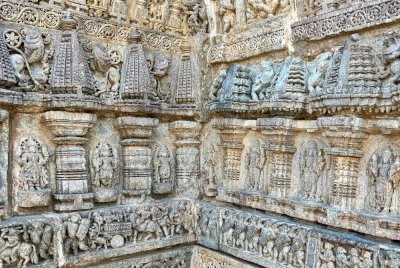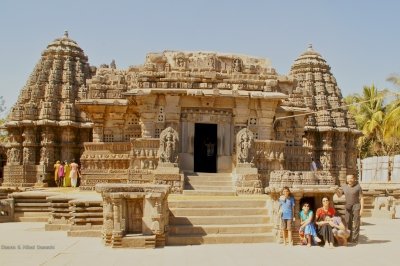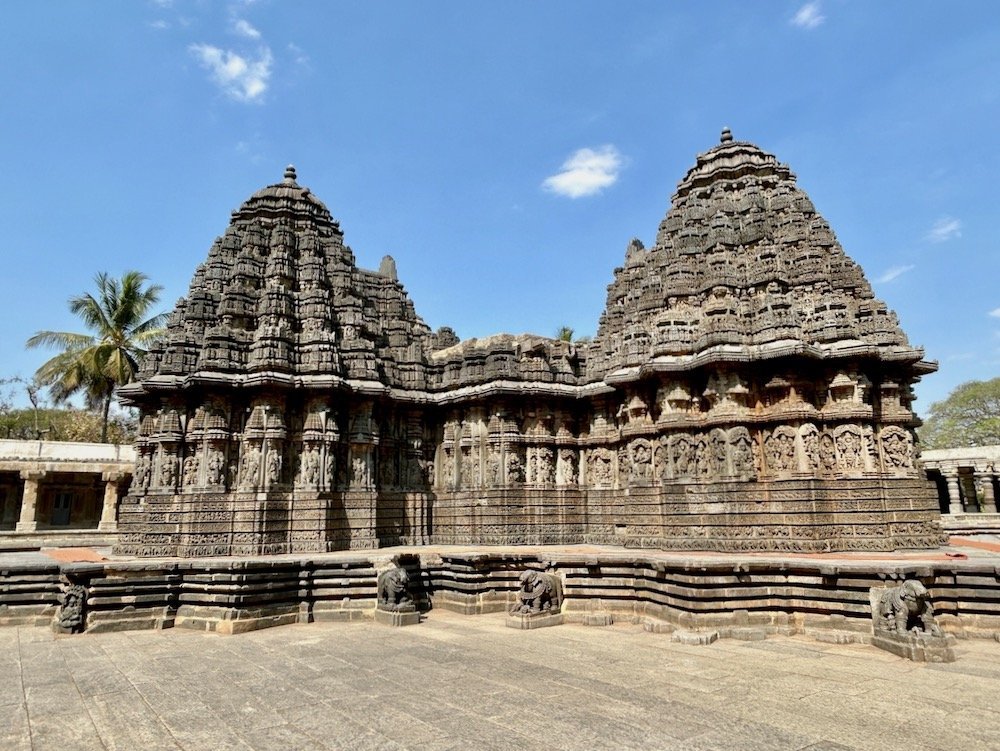India
Sacred Ensembles of the Hoysalas
The Sacred Ensembles of the Hoysalas represent a distinct style of Hindu temple architecture, with exuberantly decorated exterior and interior surfaces.
They comprise three groups of temples from the 11th – 14th centuries. The Hoysala Kingdom tried to distinguish itself from its neighbours, resulting in the patronage of architecture, art, and literature by the royal family and elites. The Chennakeshava temple in Belur remains an important pilgrimage center.
Community Perspective: Mihai visited Keshava Temple in 2012 and found it "different from everything we've seen so far". Shandos describes how to visit from Mysore and warns about only online tickets being available.
Site Info
Official Information
- Full Name
- Sacred Ensembles of the Hoysalas (ID: 1670)
- Country
- India
- Status
-
Inscribed 2023
Site history
History of Sacred Ensembles of the Hoysalas
- 2023: Advisory Body overruled
- ICOMOS had advised Referral
- 2023: Inscribed
- Inscribed
- 2022: Postponed
- Due to >1 nomination proposed by State Part in same year, postponed for 2022
- WHS Type
- Cultural
- Criteria
- i
- ii
- iv
Links
- UNESCO
- whc.unesco.org
All Links
UNESCO.org
- whc.unesco.org — whc.unesco.org/
Community Information
- Community Category
- Religious structure: Hindu
Travel Information
Recent Connections
View all (10) .Connections of Sacred Ensembles of the Hoysalas
- History
- World Heritage Process
- Religion and Belief
- Human Activity
- Timeline
News
No news.
Recent Visitors
Visitors of Sacred Ensembles of the Hoysalas
- Ammon Watkins
- Artur Anuszewski
- Els Slots
- Erik Jelinek
- Frederik Dawson
- gautamiyer23
- Joel on the Road
- Joyce van Soest
- KeithBailey
- Kurt Lauer
- marcel staron
- Mihai Dascalu
- Mikko
- Mkandasa
- Mkandasa
- Morodhi
- Patrik
- Paul Schofield
- Philipp Leu
- Priyaranjan Mohapatra
- Reza
- Roman Bruehwiler
- Shandos Cleaver
- Stijn
- Travelure
- Zoë Sheng
Community Reviews
Show full reviews
A business trip in Bengaluru not only took me back to India but also a perfect chance to visit one more World Heritage Site, the Sacred Ensembles of the Hoysalas. Originally, I thought I should have free days during weekend, so I already arranged two days tour to visit all three temples that are the component of this UNESCO site, but the business meeting continued to Saturday forced me to change my plan to visit only one temple, the Chennakeshava Temple at Somanathapura which is considered the zenith of Hoysala architecture. It took almost 3.5 hours from Bengaluru’s downtown to reach the small village of Somanathapura. My driver immediately took my colleagues, who were last minute decided to join this tour, and me to the ticket booth to secure digital ticket and requested us to take off our shoes at the temple entrance. I tried to keep my shoes inside my backpack for safety, but the driver insisted that no shoe even inside backpack is allow inside the complex. Then we met a guide who helped us to understand what Hoysala art is.
The most unique characteristic of this temple is the star shaped layout which reminded me the Church of St. John of Nepomuk at Zelena Hora in Czechia, but this one in India is far more complex with 3 star-shaped temples connecting with each other forming a beautiful and impressive building. We entered the temple hall to see the ceiling which is depicting mango leaves and banana …
Keep reading 0 comments
After booking cheap flights to the southern India city of Tiruchirappali (or Trichy for short), we were disappointed that we didn't have quite enough time to visit Kochi. However, I realised that with our spare day, we could visit one of the temples comprising the recently inscribed Sacred Ensembles of the Hoysala, just outside of Mysore.
Keshava Temple is located in the village of Somanathapura, a 45 minute drive outside of Mysore. It was quite easy to get there - we asked at the taxi stand opposite the main bus station and close to our hotel, and were immediately offered 1500 rupees for the afternoon trip (only slightly more than the 1200 rupees listed in the 2023 Lonely Planet). Lonely Planet also lists the option of taking a bus to Bannur and then a tuktuk to the temple.
Arriving at the temple, the hardest part of our visit was buying a ticket. Only online tickets are available, requiring a local SIM for the OTP (one-time pin). The security guards help out, but of course my credit card wanted to send me a security SMS, which was delayed by 5 minutes. Luckily an expat visitor helped us out and we gave him cash for our tickets, then entered the site through the well-maintained garden.
After having just visited the Chola Temple in Thanjavur and and the carvings at Mahabalipuram, we weren't expecting to be impressed by this small temple. But be prepared to be overwhelmed by the exquisite …
Keep reading 0 comments
I visited Keshava Temple in January 2012, during a 15 months round the world trip with our 3 children. We spent 4 nights in Mysore and from there it was an easy trip to Keshava Temple. I got there because of a picture I have seen years ago on wikipedia. I thought it was amazing and I am very happy that it is now selected as a WHS. At the time I wrote in our blog:
"My temple! A picture seen somewhere on the internet a few years ago became a destination in itself.
Kesava temple was built in the 12th century and is a prime example of Hoysala architecture. What is that? Hoysala was another empire and civilization, between the 10th and 14th century, before all the other ones that we learned about. It had three main centers, and Somnathapur (or Somanathapura) was one of them. Just 45 minutes from Mysore, it was a quick, easy ride. A little temple, the one from my picture, is awaiting it's visitors on a laid back, quiet Sunday morning. We spent two entire hours going in and around it. It is different from everything we've seen so far. We had time to experiment with pictures, take turns with the camera, read in wikipedia about the specifics of this type of architecture. There are layers over layers of sculptures, starting with elephants at the bottom, then horses, then people. There are scenes from the famous Mahabharata, Ramayana and Bhagavat Gita, and the …

